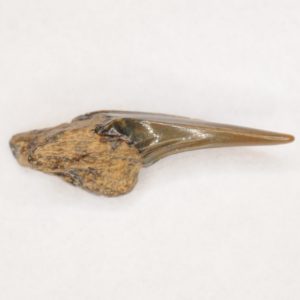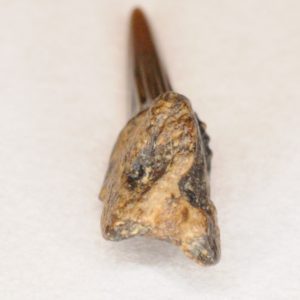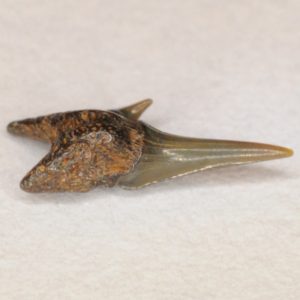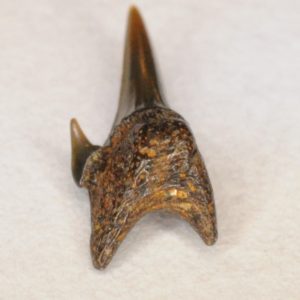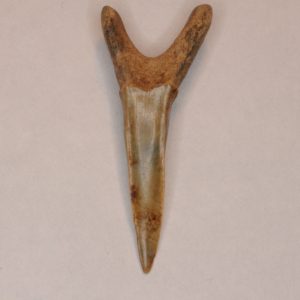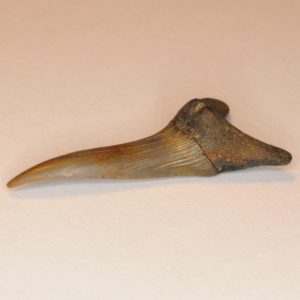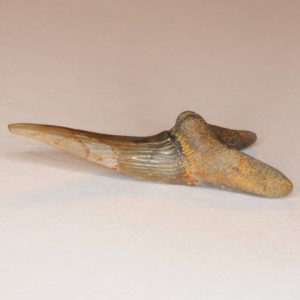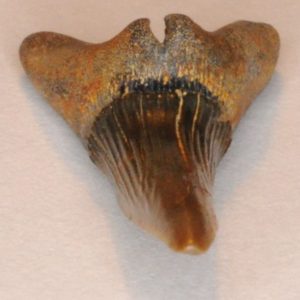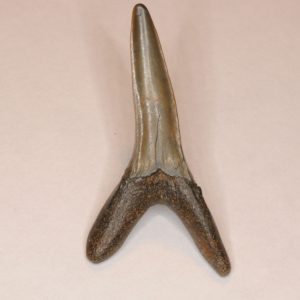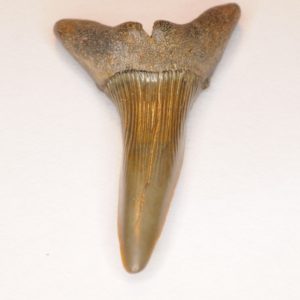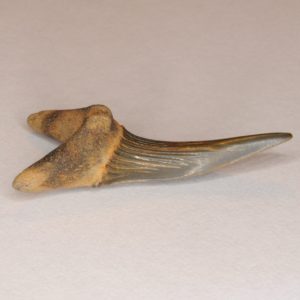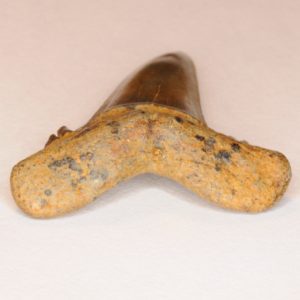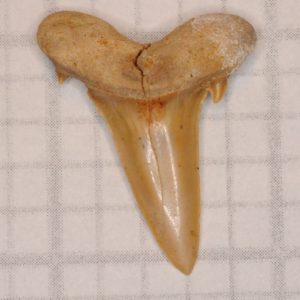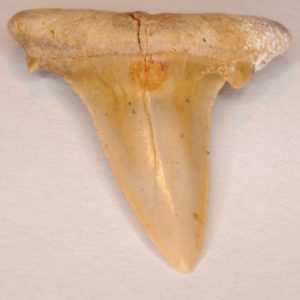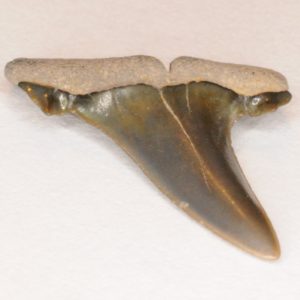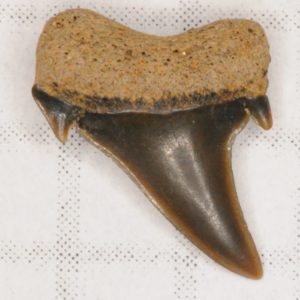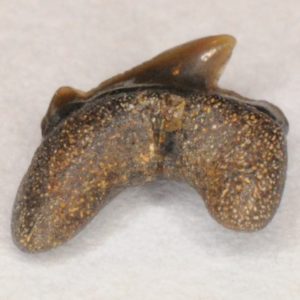NJfossils.com
"Fossils aren't a hobby, they're a lifestyle."Goblin (Scapanorhynchus texanus)
Age – Late Cretaceous; Commonality – abundant; Size – avg: 1/2-1.5 inches, max: 2+ inches
The teeth of the goblin shark are the largest and generally most common find in Monmouth County. The Goblin shark’s teeth are very distinct compared from the other types found here but can sometimes be confused with a sand tiger or a mackerel.
The anterior teeth are long, have a bilobate root with a lingual protuberance and a deep nutrient groove, strong striations on their lingual crown face, striations on the lingual part of their root that’s closest to the crown (sometimes there are striations on the labial face of the root as well), and sometimes possess cusplets. The anteriormost teeth do not have cusplets. The upper lateral teeth are broader, slightly shorter, flatter, and are curved toward the distal side. They have 1-3 cusplets on each side of the crown. These teeth have a smaller lingual protuberance and a shallow nutrient groove. They can sometimes have striations on the crown and/or root. Lower laterals are similar to the upper lateral teeth, but are more erect. Posteriors are much smaller than the anteriors and laterals and tend to be confused with the mackerel shark teeth. Upper posterior teeth are more curved than the lower posterior teeth. This shark also had symphyseals. These teeth are very thin and have uneven root lobes. Scapanorhynchus is not known to have intermediate teeth.
Juvenile goblins (much less common than the adult teeth) can look very much like sand tigers. The relatively longer crown and very strong striations are good indicators of a goblin.
This shark’s dentition differs from that of the modern goblin shark, Mitsukurina. The modern goblin has more of a grasping dentition, while Scapanorhynchus had more of a grasping/cutting dentition (the anteriors are grasping while the laterals are made to cut). This fossil goblin is much more abundant than the modern goblin.
Symphyseal Teeth
Upper Anterior Teeth
Lower Anterior Teeth
Upper Lateral Teeth
Lower Lateral Teeth
Posterior Teeth
This is possibly an upper first posterior.
This posterior is significantly smaller than the one above.
This upper posterior is from one of the last two upper posterior positions. Posteriors (like symphyseals/parasymphyseals) can take on a variety of shapes. This one has an interesting enameled ledge on the distal side.
Lower posteriors seem to be less common. They are more erect and on average have much more reduced cusplets than upper posteriors. This lower posterior is from one of the two posteriormost positions.



